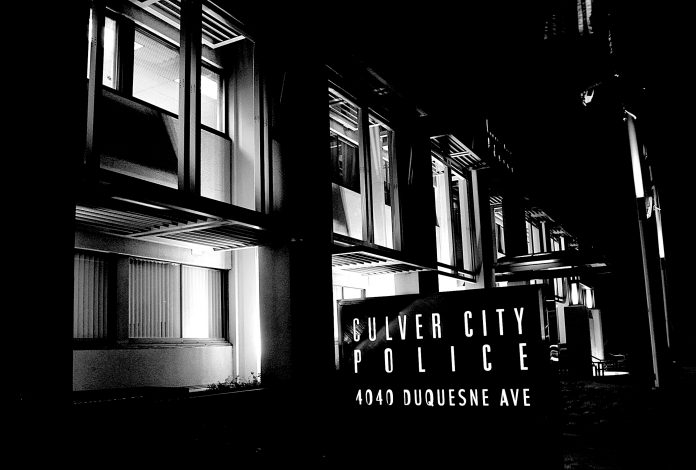By Christian May-Suzuki
Despite being published more than 60 years ago, George Orwell’s novel about a dystopian future with omnipresent surveillance from the government called “1984” has spiked in sales in recent years. With the way events like the Culver City Police Department’s presentation on their new Unmanned Aerial Vehicle (UAV) program did, it’s easy to see why that is.
The Culver City Senior Center was lively last Thursday night as citizens filed in for the open forum event in which Capt. Jason Sims led the presentation, accompanied by Lt. Troy Dunlap, Police Chief Scott Bixby, and Fire Chief Dave White. The department planned to make a presentation that they hoped would clarify the department’s intention but were also prepared to answer public questions.
Before the event began, Sims was actively engaged in taking questions and discussing preliminary thoughts about the policy with the concerned citizens in attendance. There were some people, ranging from young adults to senior citizens, who arrived charged with emotion of an emotional March meeting at City Hall about the UAV program.
Sims made a brief 30-minute presentation before the officers and fire chief answered questions and listened to a variety of concerns.
The proposed program would last over 18 months and would involve the use of seven different drones of three different sizes by police for a variety of uses. The deployment of these drones would only be incident driven and would be used for but not limited to accident investigations, missing person investigations, search-and-rescue operations, natural disaster management, fire rescue, and crowd control stations at large public events.
Several examples of the situations that these drones would be deployed in provided by the Torrance Police Department were shown in full, high-definition video, including monitoring a runner while officers were in pursuit and a wrap around of a felony car stop to find that the passenger in the vehicle was sleeping as opposed to some action deemed dangerous to police or criminal.
The Culver City Police Dd\epartment purchased seven different drones of three different sizes for different uses and areas of deployment. The total cost of the drones was $70,000, and many citizens present were upset that the city spent that kind of money without consulting the public first. On top of that, training pilots were estimated to cost about $500 to $1,000 per pilot.
Longtime citizen, Gerald Weiner, had fears about exactly where the drones were purchased and believed that the money was possibly ending up in the hands of criminals. However, Sims soon explained that the drones were high-end, but also commercially available, which hopefully calmed those fears.
Citizen Rick Tuttle, as a representative of the Culver City Democratic Club, implored the CCPD not to deploy the drones. The Democratic Club had voted unanimously to stand against the l of the program.
Much of the public’s concerns centered on privacy matters. This was a hot topic that the CCPD hoped to quell, but with seemingly little success.
Despite strict protocol and care for privacy being emphasized throughout the presentation, some citizens were afraid of the unseen eye; the fact that the drones could be over their houses without their knowledge causes them a great deal of paranoia.
“It’s just different,” one woman muttered after Capt. Sims used body cameras as an example to demonstrate the lack of invasiveness of drones by comparison.
Others feared the federal government would attempt to highjack the program and use it for surveillance, as many people believe America is creeping toward a dystopic society from 1984. The idea of incident-driven deployments only as opposed to random surveillance was also emphasized by Sims; regardless, doubts still lingered.
Not every attendee was on the same side. One concern was the police would begin to overuse these drones, and the erosion of the personal connection between the police and the public would occur as a result. Others believed that the small size of Culver City, combined with its general safety would significantly limit when the drones would be used, making the decent sized purchase a waste.
On the other hand, there were people in attendance who favored the drone program. Several people argued that the general public should give law enforcement as many nonviolent means to assist in their work as possible. One person argued that $70,000 was a small price to pay if it saved even one life.
People were generally civil during the two-hour meeting, voicing their concerns, and acknowledging the police department’s position on drone use. to the group of presenters for some final words, but many seemed content.

